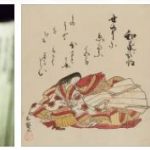According to Homeagerly, Japan’s modernization program started from the so-called Meiji restoration (1868) and invested all fields bringing with it profound and radical transformations, often inspired by Western models, the only ones that seemed able to allow the realization of the ambitious project to become a full member of the great powers. Cultural life and literature were also profoundly renewed. Poetry and theater, particularly nō, boasted a tradition of prestige and a rich and sophisticated theoretical elaboration, which would have allowed the old forms to go hand in hand with the new ones, somehow inspired by the West. For the novel, on the other hand, it was necessary not only an artistic re-evaluation, but also an adequate theoretical formulation. S. Tsubouchi wrote the essay Shōsetsu shinzui (“The essence of the novel”, 1885), in which he claimed the autonomous nature of the novel and its need to be inspired solely by reality. The speech was translated into practice by S. Futabatei, author of Ukigumo (“Fluctuating Clouds”, 1887-89), considered today to be the first true example of a modern Japanese novel.
The period between the end of the nineteenth century and the beginning of the twentieth century was characterized by the rise of numerous schools that at least formally were inspired by Western currents of thought (Realism, Romanticism, Naturalism), but which would soon have imprinted on their novels completely original turns, also drawing on traditional heritage. Among the most important names are those of Ō. Mori and S. Natsume, who ranged from the fantastic tale to the diary to the realistic novel: his best-known works are aimed at examining new intellectuals and their journey towards the affirmation of an individualism that translates into loneliness and marginalization. The poem was expressed mainly through A. Yosano, sensitive interpreter of a new type of tanka, and S. Masaoka, who renewed the haikai, while original poetic forms were experimented by H. Kitahara and S. Hagwara.
In the 1920s and 1930s, new avant-gardes emerged and a mature literature capable of offering models and suggestions was established. In the field of theater, K. Ōsanai, founder of the “small Tsukiji theater”, remains a key figure in the creation of a modern Japanese theater, which counts among the prominent authors of the period before the Second World War S. Kubo, J. Miyoshi, K. Kishida and Y. Mafune. In fiction, J. Tanizaki, R. Akutagawa, Y. Kawabata they are the main exponents of the Japanese novel of the 20th century, each with a precise personality, a great originality and a wealth of imagination. At the same time, we note the exceptional flowering of a popular literature with strong links with journalism, cinema, radio, comics (the latter very rich in its development) and later, after World War II, with television. This literature was soon divided into different genres – from detective novels to science fiction, to sentimental drama – but found its most original results in the historical adventure novel, dominated by the great battles of the past or by the figure of the master of arms who travels the country in search of duels. K. Nakazato with Daibosatsu tōge (“The passage of the great bodhisattva”, 1913-41) and E. Yoshikawa with Miyamoto Musashi (1933-39) are the undisputed masters of this type of tale.
In the war period the genre of the diary and war reports prevails, but the most interesting works were born from the pen of a writer, A. Nakajima, who deliberately rejected any direct reference to reality, preferring works set in distant places and times and favoring short tales dominated by the fantastic and magical element. After the Second World War, literary production had an extraordinary revival. Alongside the old writers, who appear again after a period of forced silence or voluntary isolation, other authors make their way: O. Dazai and A. Sakaguchi, leading exponents of a rebellious, unrealistic and nihilistic generation to the point of self-destruction. Shortly after, Y. Mishima with his novels Kamen no kokuhaku(“Confessions of a mask”, 1949) and Kinkakuji (” The Temple of the Golden Pavilion”, 1957), two works that summarize the writer’s complex aestheticism, the identification of beauty with destruction and death, the exaltation of the heroic act.
In the 1960s, the interest of the literary world focused on two writers, K. Abe and K. Ōe, leading exponents of a committed, often provocative and intellectualistic literature, which tried to contrast the image of the new Japan launched on the path of economic and industrial prosperity, the existence of problems of maladjustment and lack of communication. In turn, the still recent experience of the war and its tragic conclusion, the atomic bombing, becomes the subject of a literature that analyzes its meaning and questions the possible destruction of humanity. The post-war theater evolves through the works of J. Kinoshita, who proposes a genre linked to regional folklore and culture; later, the cutting-edge experiments of S. Terayama, J. Kara and M. Betsuyaku will propose new addresses.
In the 1980s, in striking contrast to the progressive loss of an ideologically oriented literature, we note the sensational triumph of young writers, whose bestsellers easily exceed one million copies. This is the case of two writers, M. Tawara and B. Yoshimoto (the first author of poems, the second of novels) and of a writer, H. Murakami, who have aroused enormous acclaim from the public (if not critics) for freshness and immediacy of language, the ability to make the best use of a well-controlled sentimentality, a discreet hedonism and a not too problematic acceptance of the current affluent and consumerist society.









